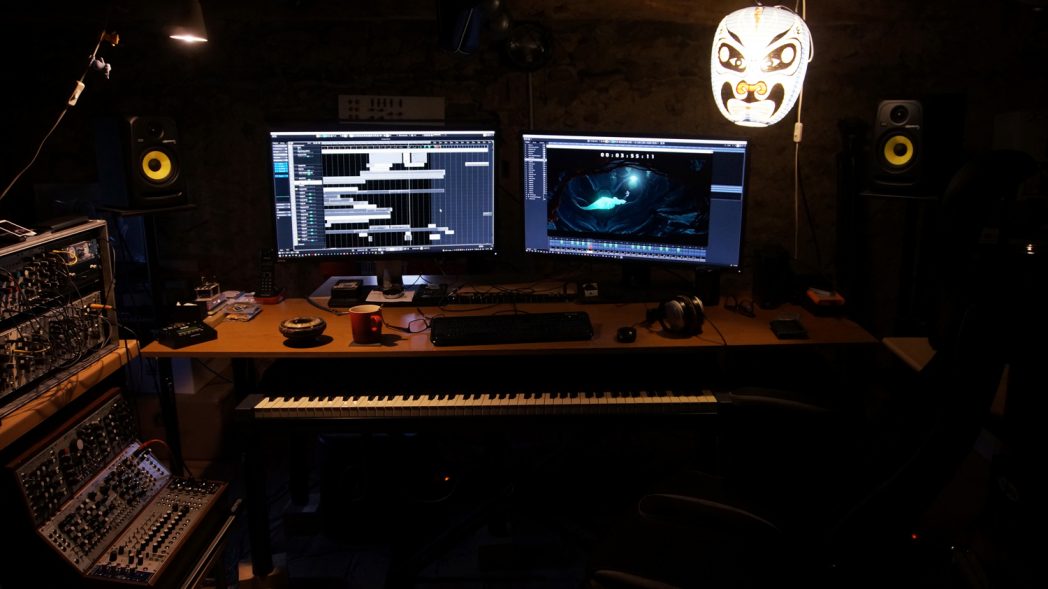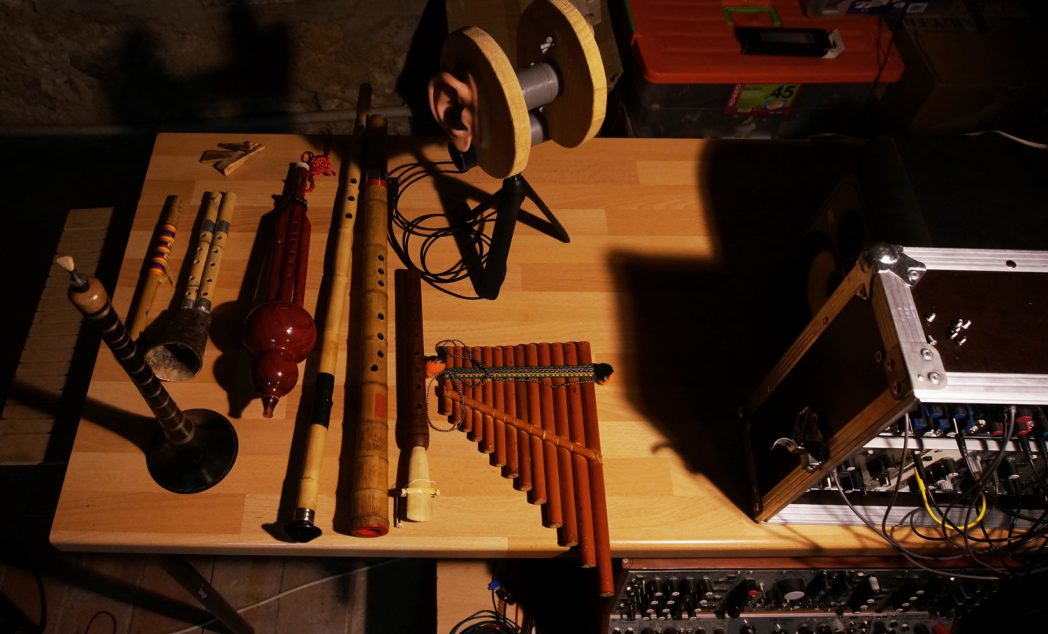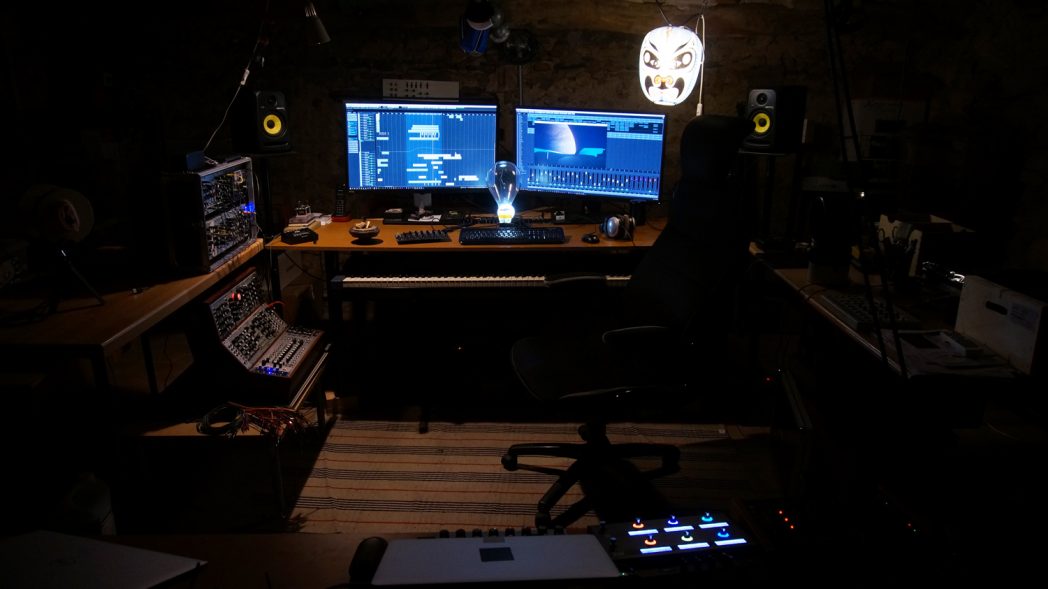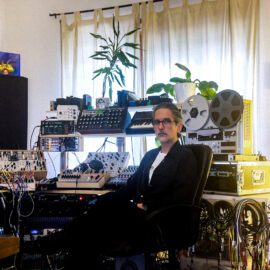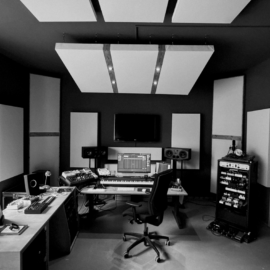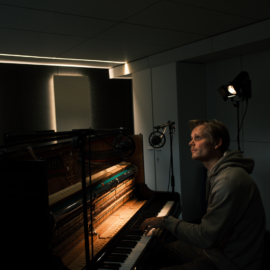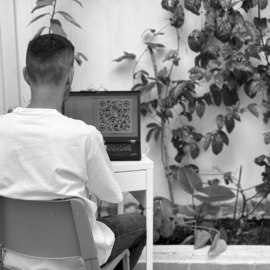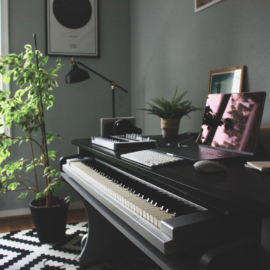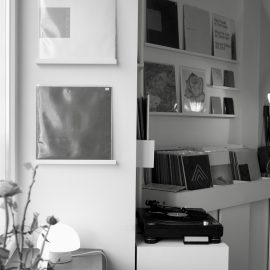Let’s start at the very beginning. Can you tell us how you got involved in composing, and what was your very first piece of gear?
I come from a family of self-taught musicians, from the side of my father, so I grew up around jam sessions of my dad and his brothers and friends, or just him practising mainly his guitar but also many other instruments. I didn’t become interested in making music myself until my early teens, heavily inspired by Jean Michael Jarre’s Oxygen album that I first heard when I was around 11, that was 1981, I just couldn’t stop playing it, and also Jon Santo Plays Bach, which was a record my dad had bought when we used to live in San Diego back in the late ’70s, and to a certain degree Pink Floyd, I had The Wall album and The Final Cut on cassette, it was always with me on my Walkman. The first piece of gear that I could call my own was a Casio SK1, back in the mid-’80s, because my father had a few guitars, an accordion, a small organ, and other instruments laying around but they didn’t really attract me. I also got my hands on a couple of cheap Yamaha Portasound keyboards around that time but can’t remember which models. The big step up for me was when my dad bought me a brand new Kawai K1, and from there I moved on to other synths both analog and digital as well as sequencers, modules and whatnot, as I grew up and was able to save my own money.
How many different studio iterations have you gone through, and what does your final setup look like right now?
Too many to count. I’ve moved quite a bit since I first started making music, and most of the time I would also make changes to my gear with each move, selling or exchanging gear with friends. But here’s a more or less accurate chronology of my music gear possessions over the years:
Right after my dad bought me the K1 I got my hand on a real-time only sequencer, don’t remember the make and model but it was a pain to use so I didn’t keep it for long, so I saved up to buy a used Kawai Q-80 sequencer and, with the help of a friend who lend me the money, a brand new Korg Wavestation. I was in heaven! After that, I added a used Roland Juno 106 that I bought from a frustrated piano student who was disappointed it could not make piano sounds, and later a really funky Fender Rhodes, it had a very retro sci-fi look, it was a mustard yellow student model. And later a Moog Prodigy, an EMU Proteus II orchestral module, among others, and finally a PC in the mid/late ’90s, running Cakewalk at first and later Cubase, which I still use.
When I moved to Spain in 2005 I sold everything and came with only a couple of hard drives with all my sound libraries and Cubase sessions in them, and slowly began buying gear as my economic situation improved after the big investment that the move from Mexico to Spain implied.
Now I own a medium-sized modular system; a DSI Tetra; Elektron’s Analog 4, Octatrack (which were kindly sponsored by the company) and Model:Cycles, MFB Tanzbar; a full-sized weighted keyboard controller; of course a PC packed with tons of software; a few acoustic instruments from around the world, especially of the wind variety; and a homemade binaural mic for field recording.
Tell us about your favourite piece of hardware.
The PC for sure, if it can be labelled as such, but after that, it’s the modular system, because of the diversity of sounds that it can generate but also its unpredictability. It’s got a few VCOs from Livewire and Doepfer, a bunch of effects and filters from Make Noise, Mutable Instruments, Intellijel and others, and a few utility modules from Abstract Data, Doepfer, 4ms, etc. I use it quite a bit in the studio, both to generate new sounds but also to process things coming from the computer, like field recordings and acoustic instruments. I also use it live with Vanessa Wagner to process her piano, not the whole system, just a few mainly sound processing modules.
And what about the software that you use for production?
Cubase 11 with tons of plugins and virtual synths, I rarely use anything else outside of its environment. It’s my main DAW since I first tried it in the late 90’s so I’m pretty much used to it, it has probably shaped the way I work too.
Is there a particular piece of gear that you’re just dying to get your hands on and do you think one day you’ll have it?
A few, I have my eyes on the Essence FM by french company Kodamo, and the Pulsar 23 by Soma Labs, but the Hakken Continuum is my current out-of-reach instrument that I would love to have, not the mini but the full-sized one, of course! I’m also very curious to see if Symbolic Sound will soon upgrade their Kyma system hardware, it’s long overdue. I’m both very curious and a bit afraid of it, looks quite intimidating but also extremely rewarding, I’ve never tried it but from what I’ve seen on the internet it’s quite the sound design beast!

Can you please share some aspects of sound design in your work?
Like I mentioned above, I use my modular system a lot to process sounds coming from Cubase, mostly acoustic instruments or field recordings. I use MI Clouds and Warps quite a bit, with the alternate Parasite firmware, and a bit of modulation going on, and 90% of the time I end up with usable material. I’ve also been using Trex’s Replicator tape echo quite a bit lately, on short but also long sounds to make it drone.
On the software side I use tons of plugins, from INA/GRM, SoundToys, Softube, etc but also from little known and quirky plugins that behave erratically, for example, the old BJ Wavechanger, Prosoniq PiWarp, or even Steinberg’s Voicemachine, which I used quite a lot in the past on my first albums, but since they never got updated to 64bit I don’t use them anymore. Paulstretch is also an amazing tool to generate beautiful landscapes and interesting harmonics from almost any sound, but especially complex ones.
I also do very basic stuff like pitch shifting and EQ, creating several layers of the same sound but pitched up and down, sometimes a few times over, with some EQ’ing and reverb to fuse all the layers together and create a new single “thing” out of them, perhaps routing them all to a single group channel with some saturation and more EQ and reverb to fuse things further, or off they can go altogether to the modular system to be further mangled. Whatever works.
Been using Steinberg’s Backbone drum re-synthesis instrument lately as well, not only with percussive sounds but also drone like material, that and Padshop 2 also by Steinberg. There are not many re-synthesis tools out there, that I know of, at least not as accessible as these two, so I’m having quite a bit of fun re-synthesizing all kinds of sounds, from pianos to wind recordings.
What does your live setup look like, and what do you bring with you when you travel for an extensive tour?
I don’t normally do extensive tours, the highest consecutive number of gigs I’ve done have been around 4 or 5 at the most.
As for live gear, it depends on the project, as I mentioned above when I play with Vanessa Wagner I bring part of my modular system, plus a hardware effect processor for extra sound mangling options, that’s the Line 6 HEX Effects pedalboard. I run the piano through them while I throw loops and other prerecorded material from Ableton Live.
When I play solo it’s mostly a laptop running Live and an iPad running Lemur, same when I work with visual artists, with whom there’s always some sort of communication going on, via MIDI or audio, mostly from my side to theirs as to control certain parameters of whatever software the visuals are being generated from.
At the moment I’m preparing a live set that includes some of the hardware gear I have in the studio, the music is based on CD2 of The Alias Sessions, close enough to the album to be recognizable but with some added elements and flexibility.
What is the most important environmental aspect of your current workspace and what would be a particular element that you would improve on?
Right now I really appreciate the quiet environment we live in, we’re right on the edge of a beautiful forest in a small village outside of Girona in Spain, it’s super quiet, and for the first time ever I have a relatively big space for my studio. We live in a 300-year-old house made of stone with mostly wood roofing and highly irregular walls, so the acoustics are perfect. But If I could add something more it would be more space, big enough to be able to install a small loudspeaker system, stereo and multichannel, so I can test the music on it, especially when preparing a live set but also occasionally when composing, and perhaps do small presentations for small groups of people, and invite other musicians. So space would be the most important element I would like to improve on to take things to the next level, but space is very expensive, so we’ll see.
What can you tell us about your overall process of composition? How are the ideas born, where do they mature, and when do they finally see the light?
It’s different every time, sometimes I do start with a clear idea of what I want to do, at least a solid starting point, but most of the time it’s just me improvising and experimenting until I find something interesting that talks to me and I start building from there. It’s just a question of patience and a love for sound until you feel the track is complete, how long it takes can vary from one track to the next, sometimes it takes years, sometimes days, but normally it takes me a few months to declare a track as complete. I’m always working on several tracks at the same time, so while a give a certain track a rest I work on another one, jumping from one track to the other (sometimes from different projects) until they slowly start arriving at the finish line one by one, and this happens when after letting the track rest for while I listen to it several times more and it still feels fresh and exciting, and also no more musical ideas come to mind. Then it’s finished.
After the piece is complete, how do you audition the results? What are your reactions to hearing your music in a different context, setting, or a sound system?
I do listen to them on different headphones and speaker systems, as many as I can get my hands on, including on my crappy car stereo. I also do a bit of comparative listening with other artists that I love. But the best is to listen to it on a big PA system live, so I sometimes introduce a new track or two when I play live to test them out, and it’s almost certain that I will need to make some adjustments afterwards.
Do you ever procrastinate? If so, what do you usually find yourself doing during those times?
Yes, a creative blockage is an integral part of the composition process, when that happens I distance myself from what I’m doing for a day or two, sometimes a week. I listen to other music, read, watch a movie, have long walks, tend the garden, etc, whatever I can do to take my mind somewhere else and allow the blockage to dissolve, I find not obsessing over it does the trick, sooner or later the flow of ideas does come back, sometimes it can take longer than I would like but it eventually does. And it also might just be a matter of keeping at it until you find the spark again, can be a happy accident while experimenting in the studio, or an idea that came from an unsuspected source while you were taking a walk in the city.
